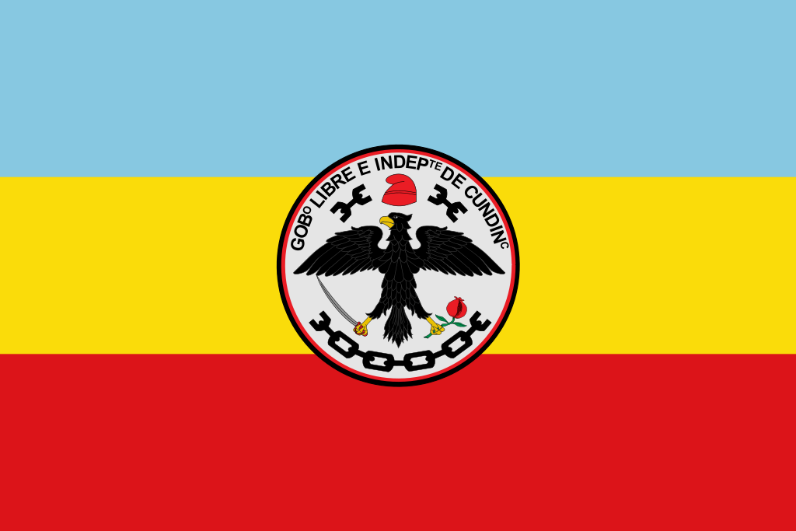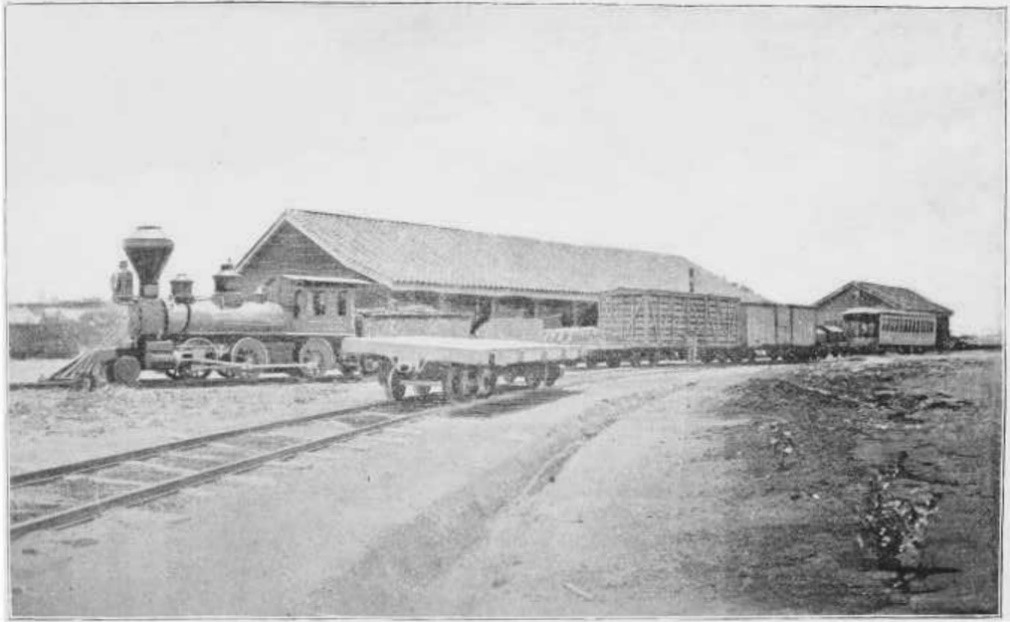GIRARDOT
Department
Cundinamarca Department, Colombia

Flag of the city
Composed of three horizontal stripes. The first, which occupies fifty percent of the pavilion, is in red, and means the blood shed by the brave soldiers in the Thousand Day War, since Girardot, as a liberal stronghold, was the scene of wild beasts’ battles. The other half of the flag is divided into two equal parts. The white, central stripe, is the purity of its inhabitants. The green means the fields and meadows that surround it.

Seal of the city

Slogan of the city
“Always ahead” serves as the slogan for Girardot, encapsulating the city’s forward-thinking spirit, progress, and a commitment to embracing the future. This motto suggests a community that is dynamic, innovative, and ready to meet challenges with resilience and optimism. It reflects the city’s aspirations for growth and development, inviting both residents and visitors to be part of a forward-moving journey in Girardot.
History

In the pre-Columbian era, the land that now comprises the municipality of Girardot was inhabited by the indigenous “Panches” tribe, whose origins remain shrouded in mystery. The genesis of the municipality traces back to the hamlet of “La Chivatera” (the goat farm), reflecting the prevalent practice of goat farming in the region. This hamlet was situated within the jurisdiction of the municipality of Tocaima, known in historical documents from 1840 as “paso de Flandes” (step of Flanders). The Magdalena River, coursing southwest through this hamlet, played a pivotal role in the area’s geography, contributing to its historical significance as a strategic location. Girardot’s official establishment as a municipality can be attributed to its strategic growth and the generous donation of land by Ramón Bueno and José Triana. The municipality was formally founded under the name Girardot, honoring General Atanasio Girardot, according to Ordinance 20 on October 9, 1852, which decreed the creation of a parish district named Girardot. Claudio Clavijo assumed the role of the first mayor, and the parish itself was instituted in 1866, documented in the Cundinamarca Gazette No 407 of July 7, 1891, with the distinction of being the first parish under the guidance of priest José Marcelino Pardo. The city’s early development unfolded in a grid pattern, converging around San Miguel square, where a cathedral of the same name stands, echoing the architectural style prevalent in the region. Reflecting the city’s growing importance, the first hotel, the Cisneros Hotel, was erected in 1884 to cater to the influx of travelers and merchants. Two years after its completion, the population of the port was documented at 2,163. The impact of the Thousand Days’ War further shaped Girardot’s demographics, with a significant influx of liberal refugees from the south and east of Tolima settling in the area during this tumultuous period.
Geography of the city
Nestled within a vast plain, Girardot is a city framed by the foothills of the Cordillera Oriental, its terrain marked by a gentle undulation, devoid of striking topographic features. The landscape, although predominantly even, presents challenges in certain areas, particularly in the mountainous expanse along the Nariño border, known as the Alonso Vera Cordillera. The city’s geographical coordinates place it at a latitude of 4°18′18″N and a longitude of 74°48′06″W. Girardot’s expanse encompasses 130.32 km², revealing a thoughtful division between urban and rural domains. The city proper spans 22.6019 km², a bustling urban center amidst the broader tapestry of the municipality. The rural expanses cover 107.7181 km², extending into areas of tranquil countryside, contributing to the diversity of Girardot’s geography. The larger metro area expands across 355.42 km², incorporating surrounding regions into its tapestry. Embraced by the Cordillera Oriental, Girardot’s elevation averages at 326 meters (1,070 feet) above sea level, with its lowest point resting at 289 meters (948 feet). This geographical canvas provides the city with a dynamic backdrop, shaping its climate, accessibility, and overall ambiance. Peopled by 101,018 inhabitants, Girardot stands as the 6th most populous municipality in Cundinamarca and the 59th in all of Colombia. The urban heartbeat pulses with 95,427 residents, creating a vibrant density of 4,200 individuals per square kilometer. In contrast, the rural areas, inhabited by 5,591 individuals, breathe at a more serene pace with a density of 52 per square kilometer. The metro area, a sprawling 355.42 km², accommodates a collective population of 142,288, embodying the broader regional significance of Girardot. In its geographical tapestry, Girardot unfolds as a city where urban vitality meets the tranquility of rural expanses, all beneath the overarching embrace of the Cordillera Oriental.

Population
Municipality and town 101,018 (2018 census)
Urban 95,427 (2018 census)
Rural 5,591 (2018 census)
Metro 142,288 (2018 census)
One photo representative of the city

Etymology
The etymology of the name “Girardot” finds its roots in historical and cultural connections, providing insight into the origins and significance of the term. Girardot is named in honor of General Atanasio Girardot, a notable military figure in Colombian history. General Girardot played a significant role in the country’s fight for independence from Spanish rule during the early 19th century. The official founding of the municipality and the naming of Girardot took place on October 9, 1852. The decision to name the town after General Atanasio Girardot was made to pay homage to his contributions and sacrifices in the struggle for Colombian independence. This commemoration reflects a common practice in many Latin American towns and cities, where names are often chosen to honor national heroes, military leaders, or prominent figures who have played pivotal roles in the nation’s history. The etymology of Girardot, therefore, is intricately tied to the historical context of Colombia’s fight for independence and the acknowledgment of the bravery and leadership of General Atanasio Girardot. The town’s name serves as a lasting tribute to this historical figure, with his legacy echoed in the fabric of Girardot’s identity.
What the city is known or famous for

Girardot’s allure extends beyond its weather, encompassing a rich historical tapestry dating back to its mid-19th-century establishment. The city’s grid-patterned development, with San Miguel square at its heart, echoes its cultural and historical roots. Girardot’s landscapes, from plains to mountainous borders along the Magdalena River, offer a picturesque backdrop for outdoor activities. The legacy of the Thousand Days’ War lingers in its demographic makeup, shaped by liberal refugees seeking sanctuary. Girardot’s accessibility by road, coupled with its proximity to Bogotá, positions it as a favored destination for weekend getaways. Beyond its appeal as a tourist hub, Girardot engages in agricultural pursuits, cultivating coffee, cacao, fruits, and livestock. Fish farming further contributes to its economic activities.
